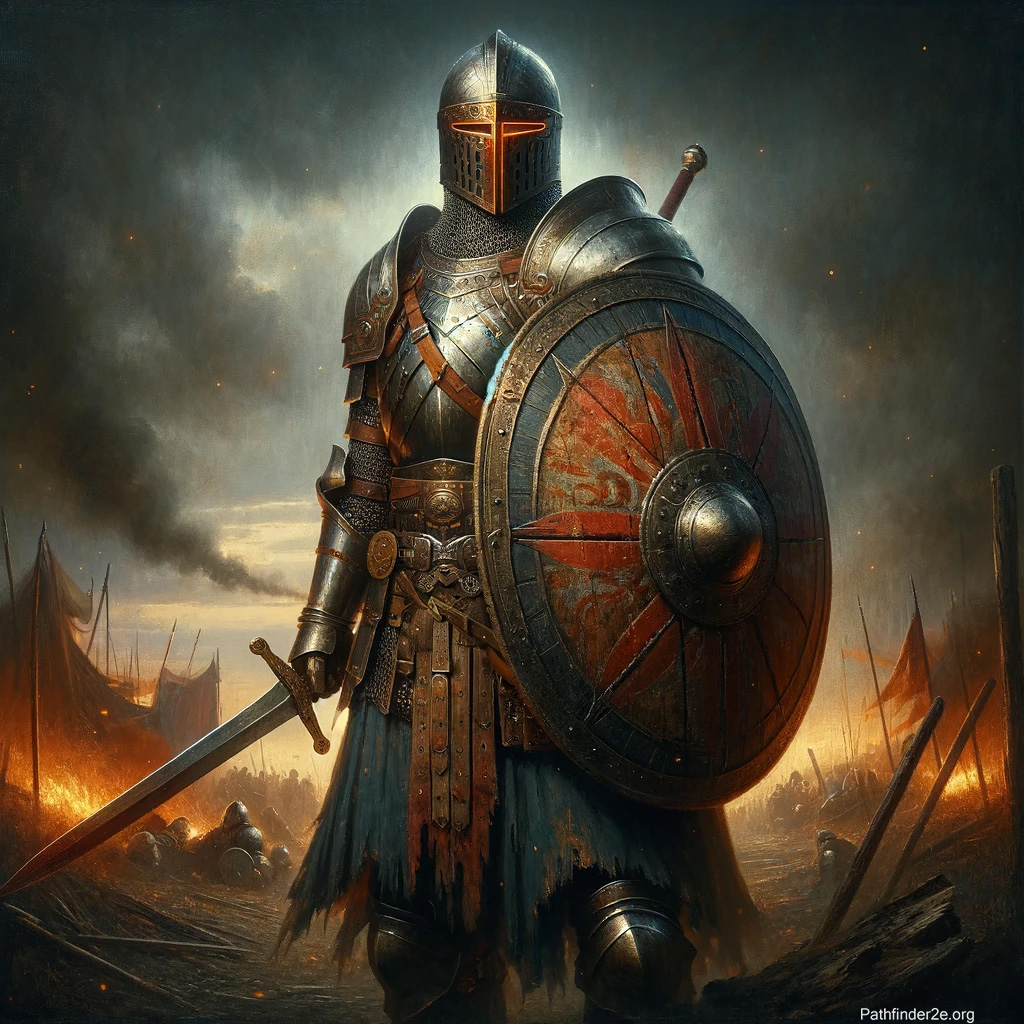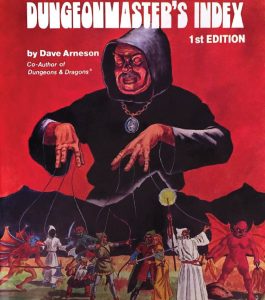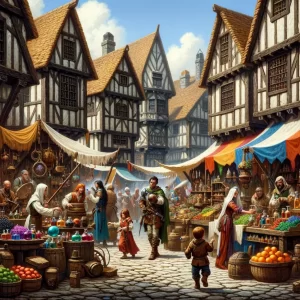
The Call of Adventure
Brave adventurers and cunning Dungeon Masters, gather 'round! You've roamed the realms of D&D 5e, battled dragons, and saved countless worlds. But now, the whisper of a new challenge beckons from the horizon - the vibrant world of Pathfinder 2e. Fear not! This transition is less like learning an entirely new language and more like discovering a dialect you didn't know you already spoke. Let's embark on this quest together with a d20 in our hands.
Understanding the Core Mechanics - Familiar, Yet Different
At first glance, Pathfinder 2e and D&D 5e might seem as different as a Beholder and a Gelatinous Cube, but they share a common ancestor. Both trace their lineage back to D&D 3.5. This means you'll find familiar terrain in the form of ability scores, the d20 system, and similar combat structures. However, Pathfinder 2e, like that cousin who went abroad and came back with a new fashion sense, brings its unique flair to these elements.
One of the most significant changes is the introduction of the three-action economy. In D&D 5e, a player's turn is typically divided into movement, an action, and a possible bonus action. Pathfinder 2e revolutionizes this approach by granting players three actions per turn, which can be used for movement, attacks, spells, or other activities.
This system offers a buffet of tactical choices each turn, allowing for dynamic and varied combat encounters. Instead of the "move-attack-end" routine, players can mix and match actions - such as moving twice and attacking once, casting a spell and then drawing a weapon, or even launching a volley of three attacks at the risk of accruing hefty attack penalties.
Another distinct feature of Pathfinder 2e is its deep character customization. While D&D 5e offers a more streamlined character creation process, Pathfinder 2e provides a labyrinth of choices and paths. With its Ancestry, Background, and Class (ABC) system, each character can be fine-tuned with specific feats, skills, and abilities at each level. This level of customization allows players to create highly specialized and unique characters, far beyond the basic archetypes.
Moreover, Pathfinder 2e introduces a more nuanced proficiency system. Unlike D&D 5e, where proficiency is a flat bonus based on character level, Pathfinder 2e categorizes proficiency into five tiers: Untrained, Trained, Expert, Master, and Legendary. Each tier provides a different bonus and unlocks new capabilities within skills and other character features. This system not only tracks a character's growth in power but also in expertise and reputation in their chosen skills and abilities.
Lastly, Pathfinder 2e places a greater emphasis on tactical play not just in combat but also in exploration and social interactions. The game introduces distinct modes of play - Encounter, Exploration, and Downtime - each with its own set of rules and guidelines. This structure encourages players to engage more deeply with the game world and their characters' roles within it.
While Pathfinder 2e and D&D 5e share a common foundation, the former takes these basics and builds upon them, offering a more complex and customizable experience. Pathfinder 2e's intricate mechanics cater to players who enjoy depth and detail in their role-playing experience, while D&D 5e appeals to those who favor a more streamlined, template characters, and straightforward approach.

D&D vs Pathfinder 2e
Game Mechanics
- D&D 5e: The rules are designed to be easy to learn, emphasizing simplicity, cookie-cutter characters, but not speedy combat: the pace is slow: movement, action, bonus action, interaction, and reaction. The game employs a streamlined approach with fewer rules, making it easy for kids, but the combat steps are burdensome for Master's and players.
- Pathfinder 2e: Pathfinder 2e is known for its detailed and comprehensive rule system and takes gamers expectations into consideration. It provides more mechanics, especially in combat and skill interactions. This level of detail allows for a greater range of tactical decisions that provides more interaction and immersion. The three-action economy is tight.
Character Combat
- D&D 5e: Characters are more straightforward, focusing on speed build and playability - though combat economy as mentioned above, bogs down the combat.
- Pathfinder 2e: Introduces a three-action economy system, giving players more flexibility and tactical choices in combat because character builds are unique. Each turn, players have three actions they can use for movement, attacks, spells, or other activities, allowing for more original, dynamic, immersive combat encounters.
Skill System
- D&D 5e: The skill system is tied closely to the character's class and background. While there is room for customization, the options are more limited compared to Pathfinder 2e, by design characters are template patterns.
- Pathfinder 2e: Offers a more complex and versatile skill system. The proficiency levels (Untrained, Trained, Expert, Master, Legendary) add depth to skill interactions, and the extensive list of skills and feats allows characters to specialize in various ways.
- Example:
- In D&D 5e there are 117 Feats, in Pathfinder 2e there are over 4,000 Feats. In D&D 5e Feats is optional behind Ability Score Improvement, while in Pathfinder 2e both Feats and Ability Score Improvement are fundamental to character advancement and development.
Magic and Spells
- D&D 5e: Magic in D&D 5e is straightforward, with spell slots and levels determining what a character can cast. The system is easy to understand and manage.
- Pathfinder 2e: While it also uses a spell slot system, Pathfinder 2e offers more in terms of spell variety and complexity. Spellcasters have a broader range of options and can fine-tune their magical abilities more distinctly.
- Example:
- In D&D 5e there are over 500 spells, while in Pathfinder 2e there are over 1,100 spells.
Game Styles
- D&D 5e: Emphasizes ease of play, making it well-suited for narrative-driven campaigns and players who prefer a more straightforward gaming experience.
- Pathfinder 2e: Caters to players who enjoy complexity and depth in their gaming experience. It offers a robust framework for those who appreciate detailed world-building and character development.
Character Creation - A Buffet of Choices
D&D 5e is like a set menu - it's straightforward and satisfying - think staples for a meal. Pathfinder 2e, on the other hand, is a grand buffet of sweets, spices, herbs, oils, salts and peppers - choices. The extensive customization options in Pathfinder 2e allow for a broader range of character expressions. From selecting ancestries (races) with versatile heritage options to diving into the deep end of skill proficiencies and feats - Pathfinder 2e is like a playground for those who love to tinker with every aspect of their character.
Combat and Strategy - Dance the Tactical Tango
In D&D 5e, combat is like a improvisational dance - fluid and sometimes unpredictable. Pathfinder 2e turns this dance into a tactical tango. With its three-actions per turn economy system, combat in Pathfinder 2e is a game of strategic choices. Every turn, you have three actions to mix and match - will you attack thrice, cast a spell, or use a fancy move to outwit your opponent? This system encourages players and DMs to think creatively and plan their encounter attacks.

The Master's Realm - A World of Possibilities
For DMs, moving to Pathfinder 2e is like being handed the keys to a new kingdom. The game's extensive rulesets and guidelines offer a robust framework to craft intricate and compelling narratives.
Embracing the Change - Tips and Tricks
Transitioning to Pathfinder 2e doesn't have to be a solo quest. Here are some tips:
- Start with a One-shot: Before committing to a full campaign, dip your toes with a one-shot adventure. It's like a first date with Pathfinder 2e - no long-term commitments, just fun and exploration.
- Leverage Online Resources: Numerous websites, forums, and videos are available to ease your transition. These are your scrolls and tomes of knowledge.
- Encourage Group Learning: Turn rule learning into a group activity. Discuss, debate, and learn together - it's more fun that way!
- Be Patient: It's okay to make mistakes. Learning a new system is like learning to ride a dragon - exhilarating, but it takes time to get the hang of it.
Your Epic Awaits
Migrating from D&D 5e to Pathfinder 2e is not just a change in the game system; it's a new chapter in your role-playing journey. Embrace the complexity, revel in the depth of character building, and enjoy the tactical richness of combat. Remember, the heart of both games remains the same - storytelling, adventure, and the magic of bringing a world to life through shared imagination. So, gather your dice, rally your party, and step boldly into the world of Pathfinder 2e. Your epic adventure awaits!






